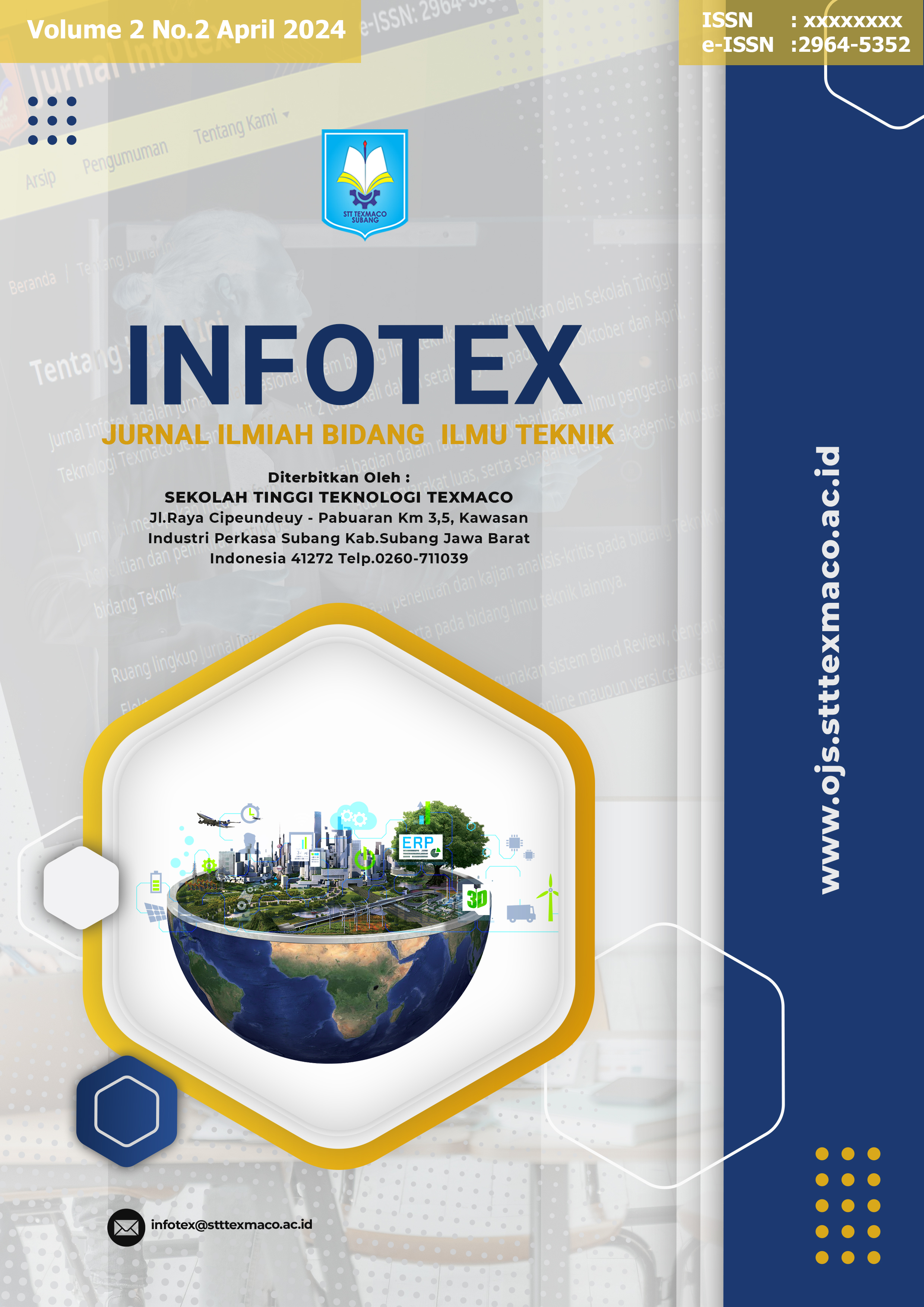Aplikasi Reservasi Gedung Serbaguna Desa Kanangasari Berbasis Website Menggunakan Metode Spiral
Keywords:
Application, Reservation, Building, Village, SpiralAbstract
The Multipurpose Building in Kanangasari Village has existing problems including a paper-based building reservation process that takes a long time, an irregular schedule, many errors in cost calculations, and difficulty in making reports because they must be entered one by one. The method used in making this application uses the Spiral method because this method is very helpful in building projects and carrying out the process by considering project risks to create the right process model and according to user needs. The Spiral model is a combination of prototype and waterfall models. The prototype model focuses on the input and output format to the user. The waterfall method focuses on a systematic and sequential software development process. The Multipurpose Building Reservation Application was created to simplify the building reservation process, facilitate the building scheduling process to avoid time conflicts so that there are no conflicts between the various activities carried out, and calculate the total cost of booking and to easily create reports, which must be submitted to the Village Head.
References
A. Samsudin and H. Hamdalah Islami, “Sistem Pengaduan Masyarakat Menggunakan Metode Agile Extreme Programming,” vol. 2, no. 1, pp. 214– 226, 2023.
J. S. Informasi, F. Ilmu, and T. Informasi, “adalah sebuah bahasa yang berdasarkan grafik / gambar untuk memvisualisasi , pendokumentasian dari sebuah sistem pengembangan software berbasis Object-,” vol. 12, no. 1, pp. 1–12, 2023.
Indrawan and D. Oktarina, “Sistem Penilaian Kinerja untuk Peningkatan Akurasi Dalam Pemberian Kenaikan Gaji Karyawan dengan Metode 360 Degree,” J. Mhs.l. Teknol. Komput. dan Inf., vol. 4, no. 1, pp. 14–18, 2022.
L. Rahman, “Sistem Informasi Geografis Tanah Bersertifikat Pada Desa Suluk Berbasis Website,” Pros. Semin. Nas. Teknol. Inf. dan Komun., vol. 2, no. 1, pp. 37–44, 2019, [Online]. Available: http://prosiding.unipma.ac.id/index.php/SENATIK/article/view/1059
I. A. Salam, K. Prihandani, and I. Purnamasari, “Rancang Bangun Aplikasi Profit Penjualan Motor Berbasis Desktop Konsep Arsitektur Model View Controller (Mvc),” J. Inform. dan Tek. Elektro Terap., vol. 11, no. 3s1, 2023, doi: 10.23960/jitet.v11i3s1.3495.
N. A. Maiyendra, “Perancangan Sistem Informasi Promosi Tour Wisata Dan Pemesanan Paket Tour Wisata Daerah Kerinci Jambi Pada Cv. Rinai Berbasis Open Source,” Jursima, vol. 7, no. 1, p. 1, 2019, doi: 10.47024/js.v7i1.164.
F. Hari Utami, “Aplikasi Pelayanan Antrian Pasien Menggunakan Metode FCFS Menggunakan PHP dan MySQL,” J. Media Infotama, vol. 18, no. 1, p. 341139, 2022.
M. Sendiang, “Pengembangan Aplikasi Reservasi Berbasis Web (Studi Kasus M-ICON Convention Centre Manado),” 2018, [Online]. Available: http://repository.polimdo.ac.id/1579/%0Ahttp://repository.polimdo.ac.id/1579/1/Karil1.pdf
D. M. Sihombing, M. B. Sanjaya, and S. K. Sari, “Aplikasi Reservasi Gedung Serbaguna Perusahaan Umum Bulog (gsg Perum Bulog) Berbasis Web,” eProceedings Appl. Sci., vol. 2, no. 2, 2016.
Fachriza Rajab Muhammad and Paimasrul, “Information System Web-Based Multipurpose Building Rental In HKBP Bandung Barat,” pp. 1-7. Bandung : Universitas Komputer Indonesia, 2019.
A. Zainudin, “Model Kelembagaan Pemerintahan Desa,” JIP (Jurnal Ilmu Pemerintahan) Kaji. Ilmu Pemerintah. dan Polit. Drh., vol. 1, no. 2, pp. 338–351, 2016, doi: 10.24905/jip.1.2.2016.338-351.
Downloads
Published
How to Cite
Issue
Section
License
Copyright (c) 2024 Aang Samsudin; Nurul Siti Rahmawati

This work is licensed under a Creative Commons Attribution-ShareAlike 4.0 International License.






